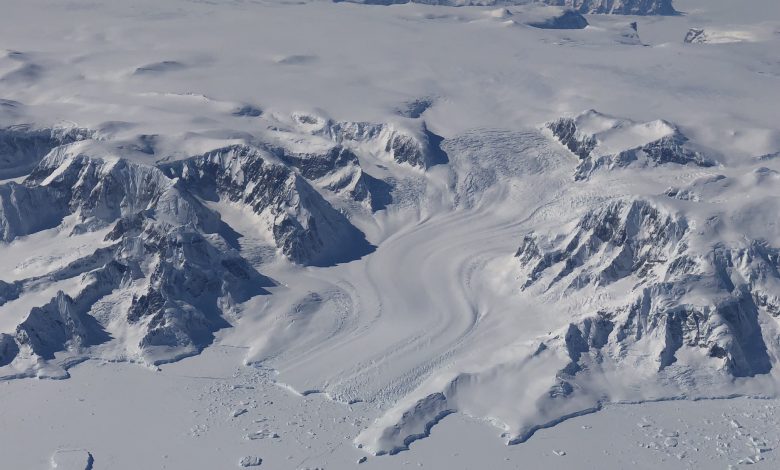
NASA publishes a video of a global disaster
ناسا تنشر فيديو لكارثة عالمية
By Kate Ramsayer – NASA
In Antarctica, for example, the detailed measurements showed that the ice sheet is getting thicker in parts of the continent’s interior as a result of increased snowfall, according to the study. But the loss of ice from the continent’s margins, especially in West Antarctica and the Antarctic Peninsula, far outweighs any gains in the interior. In those places, the loss is due to warming from the ocean.
In Greenland, there was a significant amount of thinning of coastal glaciers, Smith said. The Kangerlussuaq and Jakobshavn glaciers, for example, have lost 14 to 20 ft (4 to 6 m) of elevation per year; the glacial basins have lost 16 gigatons per year and 22 gigatons per year, respectively. Warmer summer temperatures have melted ice from the surface of the glaciers and ice sheets, and in some basins the warmer ocean water erodes away the ice at their fronts.
“The new analysis reveals the ice sheets’ response to changes in climate with unprecedented detail, revealing clues as to why and how the ice sheets are reacting the way they are,” said Alex Gardner, a glaciologist at NASA’s Jet Propulsion Laboratory in Southern California, and co-author on the Science paper.
The study also examined ice shelves – the floating masses of ice at the downstream end of glaciers. These ice shelves, which rise and fall with the tides, can be difficult to measure, said Helen Amanda Fricker, a glaciologist at Scripps Institution of Oceanography at the University of California San Diego, and co-author on the Science paper. Some of them have rough surfaces, with crevasses and ridges, but the precision and high resolution of ICESat-2 allows researchers to measure overall changes.
This is one of the first times that researchers have used laser altimetry to measure loss of the floating ice shelves around Antarctica simultaneously with loss of the continent’s ice sheet.
The researchers found ice shelves are losing mass in West Antarctica, where many of the continent’s fastest-moving glaciers are located as well. Patterns of thinning over the ice shelves in West Antarctica show that Thwaites and Crosson ice shelves have thinned the most, an average of about 16 ft (5 m) and 10 ft (3 m) of ice per year, respectively.
Ice that melts from ice shelves doesn’t raise sea levels, since it’s already floating – just like an ice cube already in a full cup of water doesn’t overflow the glass when it melts. But the ice shelves do provide stability for the glaciers and ice sheets behind them.
“It’s like an architectural buttress that holds up a cathedral,” Fricker said. “The ice shelves hold the ice sheet up. If you take away the ice shelves, or even if you thin them, you’re reducing that buttressing force, so the grounded ice can flow faster.”
For more information on ICESat-2, visit https://nasa.gov/icesat-2 or https://icesat-2.gsfc.nasa.gov
نشرت الإدارة الوطنية للملاحة الجوية والفضاء “ناسا” فيديو يوضح حجم الكارثة المناخية المرتبطة بذوبان الجليد في القارة القطبية الجنوبية.
واستخدمت الوكالة البيانات من القمر الصناعي ” ICESat-2″ على مدى السنوات الـ16 الماضية
حيث يستخدم القمر الصناعي مقياس الارتفاع بالليزر الذي يرسل إشاراته إلى الأرض بتردد 10 كيلوهرتز. وسجل القمر الصناعي، بين عامي 2003 و2019، ذوبان الجليد في غرب القارة القطبية الجنوبية، الأمر الذي أدى إلى ارتفاع منسوب البحر بمقدرا 14 مم، وهو ما يمثل تقريبًا ثلث المستوى الإجمالي لارتفاع المياه في المحيطات.
ووفقا للوكالة، فقد ازداد الجليد في الجزء الشرقي من القارة القطبية الجنوبية.
وأشارت الوكالة إلى أنه بسبب الاحتباس الحراري العالمي، فإنه سنويا يذوب حوالي 120 جيجا طن من الجليد في القارة القطبية الجنوبية، وحوالي 200 جيجا طن في جرينلاند.
المصدر: al-sharq



